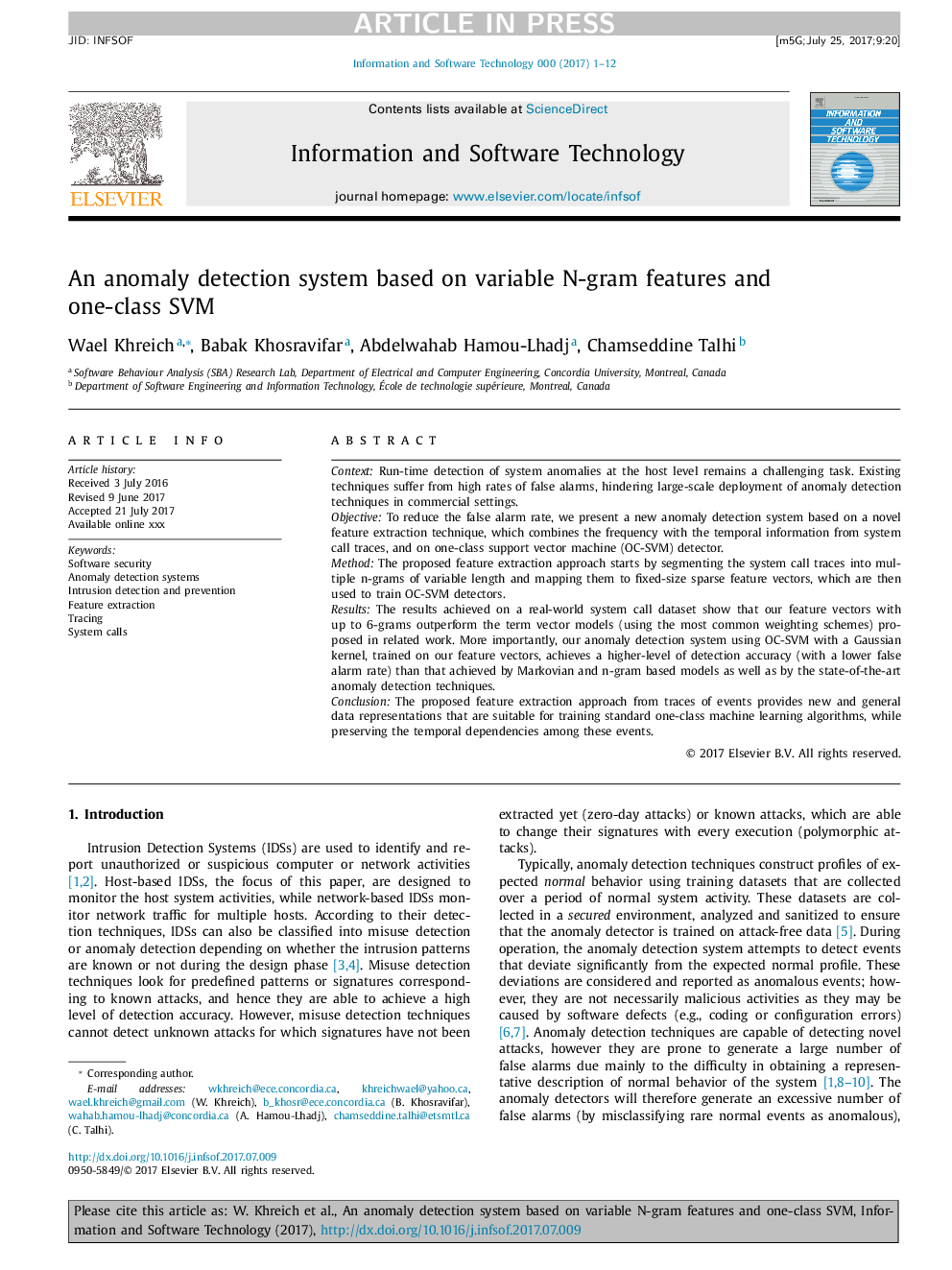| Article ID | Journal | Published Year | Pages | File Type |
|---|---|---|---|---|
| 4972233 | Information and Software Technology | 2017 | 12 Pages |
Abstract
Context: Run-time detection of system anomalies at the host level remains a challenging task. Existing techniques suffer from high rates of false alarms, hindering large-scale deployment of anomaly detection techniques in commercial settings.
Objective: To reduce the false alarm rate, we present a new anomaly detection system based on a novel feature extraction technique, which combines the frequency with the temporal information from system call traces, and on one-class support vector machine (OC-SVM) detector.Method: The proposed feature extraction approach starts by segmenting the system call traces into multiple n-grams of variable length and mapping them to fixed-size sparse feature vectors, which are then used to train OC-SVM detectors.Results: The results achieved on a real-world system call dataset show that our feature vectors with up to 6-grams outperform the term vector models (using the most common weighting schemes) proposed in related work. More importantly, our anomaly detection system using OC-SVM with a Gaussian kernel, trained on our feature vectors, achieves a higher-level of detection accuracy (with a lower false alarm rate) than that achieved by Markovian and n-gram based models as well as by the state-of-the-art anomaly detection techniques.Conclusion: The proposed feature extraction approach from traces of events provides new and general data representations that are suitable for training standard one-class machine learning algorithms, while preserving the temporal dependencies among these events.
Related Topics
Physical Sciences and Engineering
Computer Science
Human-Computer Interaction
Authors
Wael Khreich, Babak Khosravifar, Abdelwahab Hamou-Lhadj, Chamseddine Talhi,
